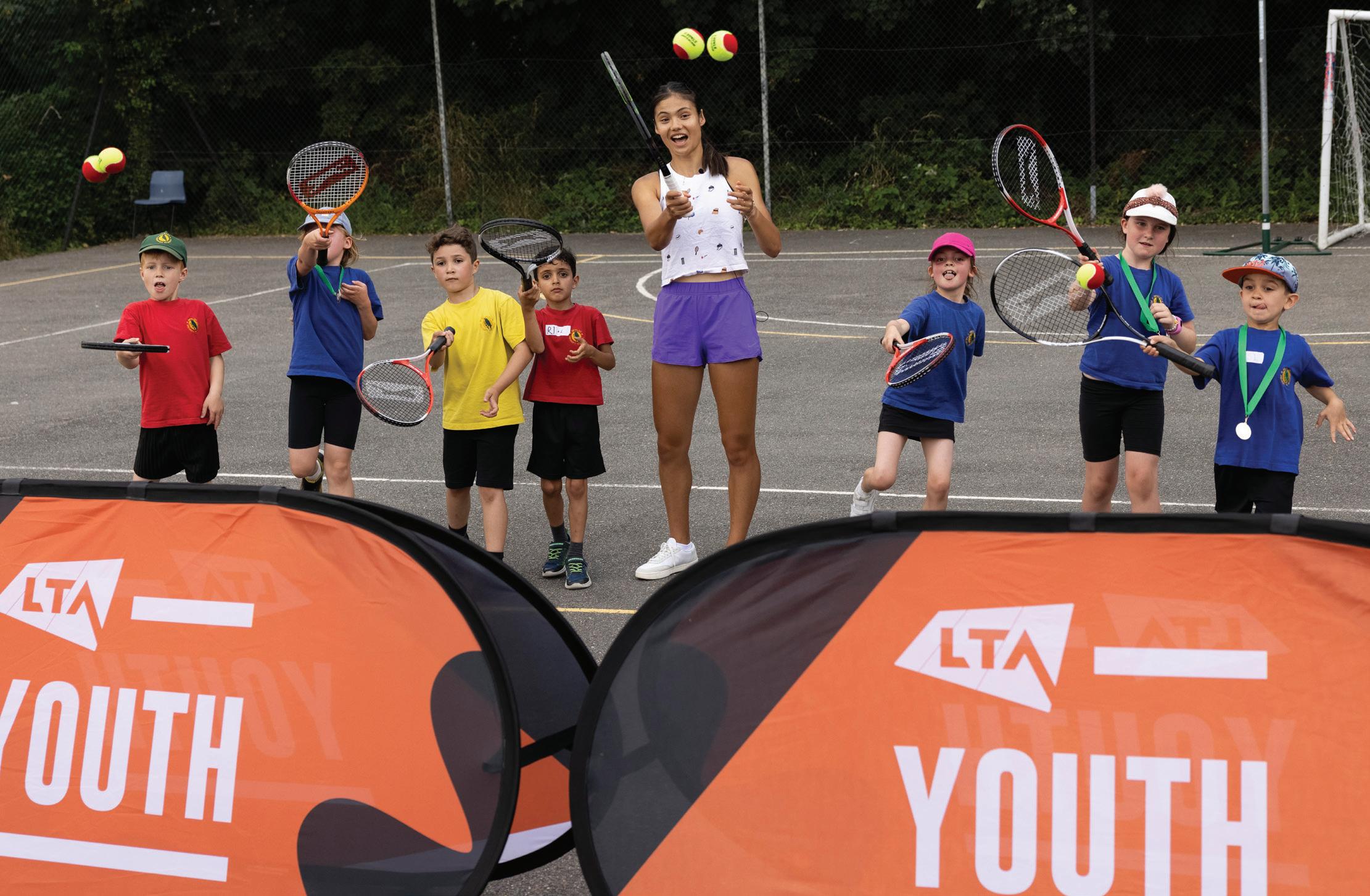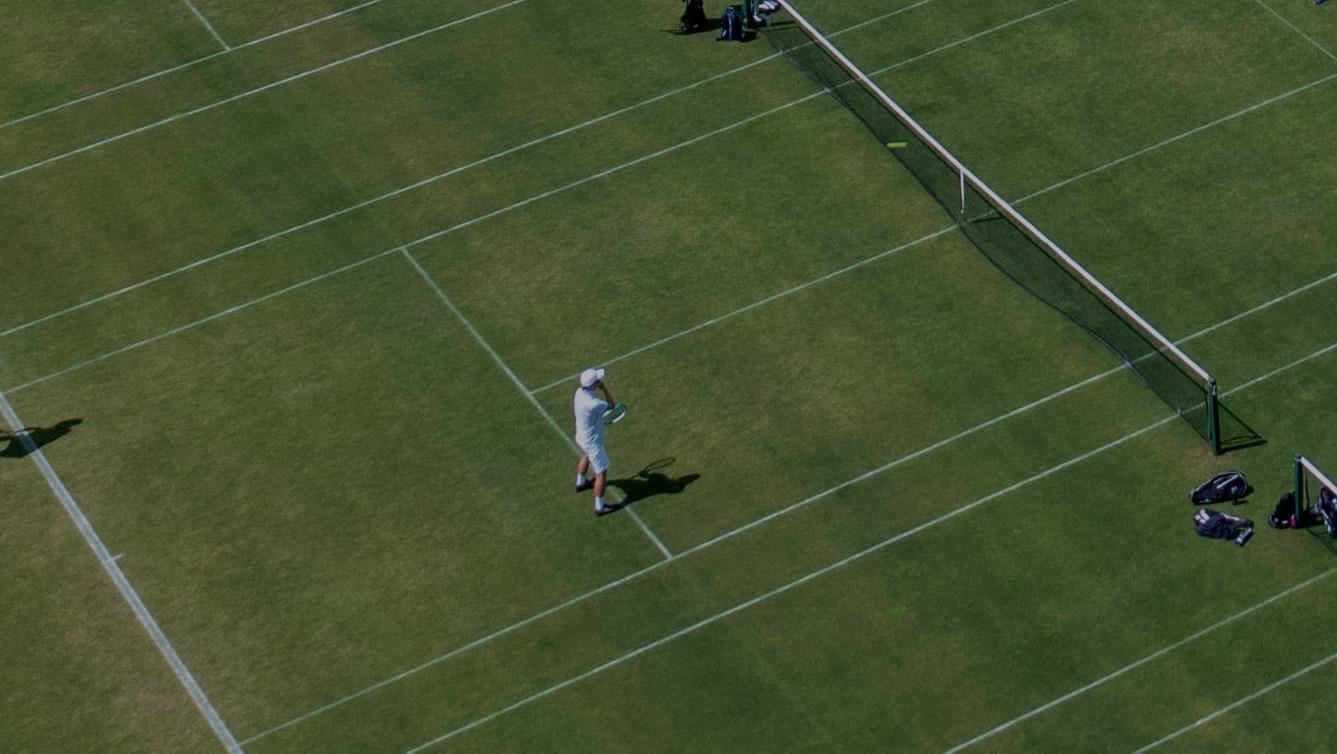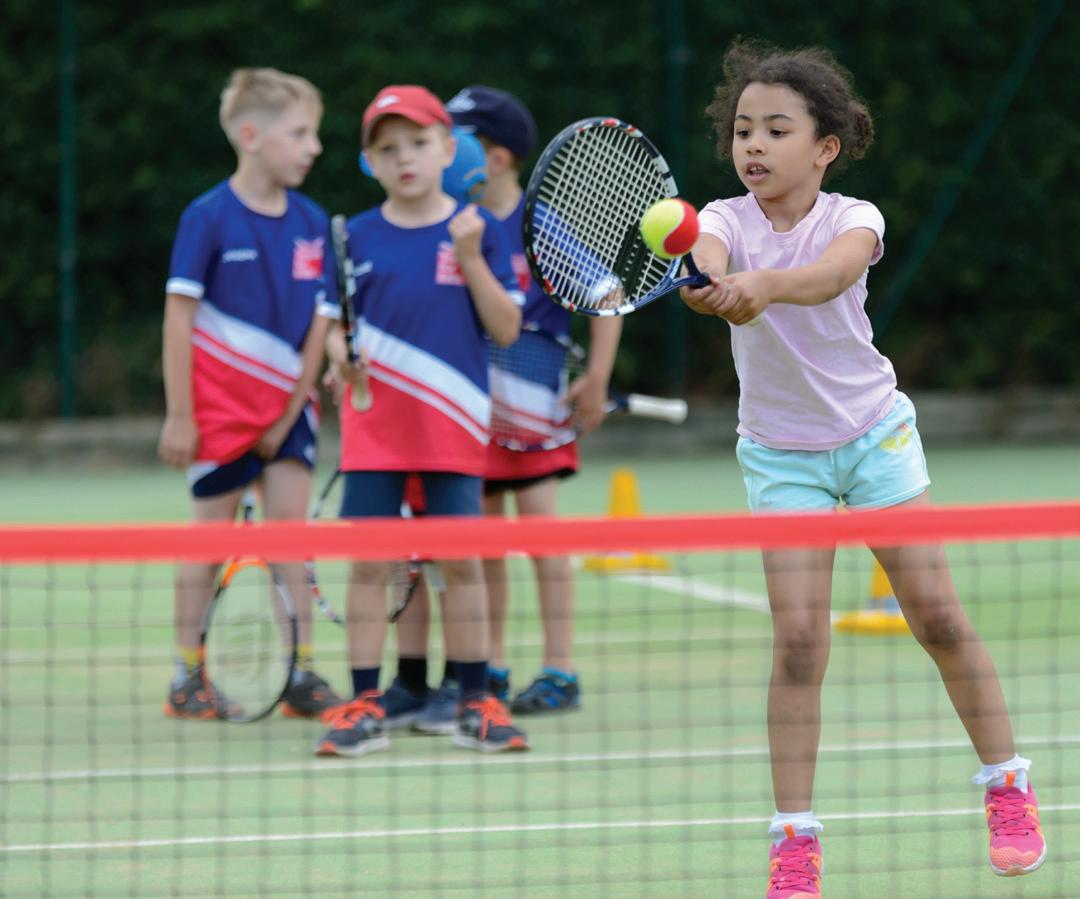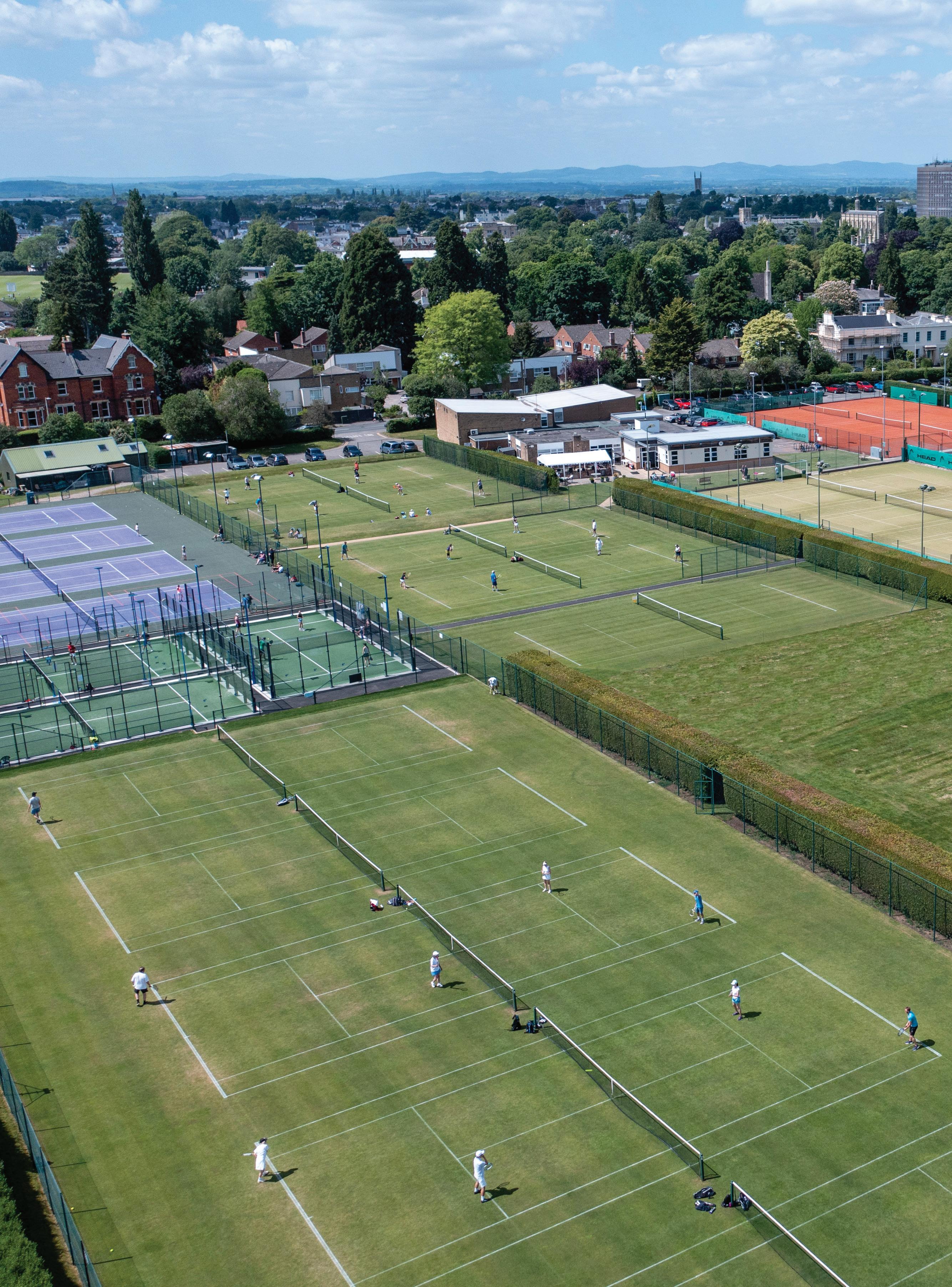
16 minute read
Growing the game: Tennis


Advertisement







The Lawn Tennis Association’s plans to increase participation across Great Britain include a £30m investment in redeveloping courts located in public parks






The governing body for tennis in Britain, the LTA, published its five-year strategy in March 2019. Led by the vision “Tennis opened up”, the document outlines the five-year plan for tennis from 2019 to 2023. At the heart of it is a mission to grow tennis by making it more relevant, accessible, welcoming and enjoyable to all.
Olly Scadgell, LTA’s participation director, says that the ultimate ambition is to open tennis up to anyone who wants to get involved regardless of their age, gender, background, ability or disability. “The strategy aims to address the historical notion that tennis has not perhaps been as open to everyone as we would like it to be,” Scadgell says. “So our plan is headed by a vision to open tennis up to anyone who wants to get involved – whether that’s as a fan, player, coach, volunteer or official.”
Olly Scadgell, participation director, LTA
YOUNG PEOPLE
The LTA strategy outlines how, in order to open up tennis and to ensure the sport’s future, it needs healthy grassroots – and the work must start with the youngest players.
“The insight tells us that if you pick up a racket when you’re younger, you’re more likely to develop a lifelong habit,” Scadgell says. “So it’s critically important that we get rackets in the hands of more young people. The way we’re doing that is through our innovative LTA Youth programme, which we launched in 2021.”
The LTA Youth programme has been designed for children aged four to 18. Packed full of fun games and drills designed to develop physical literacy, the idea is for more children to be able to access the sport and have fun playing tennis. There are five stages – from the introductory “Blue Stage” aimed at four to sixyear-olds, to the “Yellow Stage”, designed for those aged 11+. In addition, there are the LTA Youth Start courses, which are for kids aged four to 11 years old and who are new to tennis.
“LTA Youth has been created to help more children access the sport, whether they play in school, at clubs or at park sites,” Scadgell says,“For schools, we’ve devised the LTA


The LTA Youth programme is designed for young people aged between four and 18
© GE TTY IMAGES FOR LTA
Youth Schools programme to support the curriculum and wider school outcomes. It brings together inclusive PE lesson plans, personal development resources and teacher training – and it’s free.
“The way we’ve designed it is to develop not only a child’s tennis skills, but also their character and life skills, which is important as it is delivered in the school environment.
“We’ve been really pleased with how it’s gone. We now have 10,000 schools registered for LTA Youth and more than 6,000 teachers who’ve taken the training and are now delivering the programme in school environments. One of our big focuses this year is to grow that even further with the aim to reach a third of all primary and a fifth of all secondary schools in Britain by year end.”
Scadgell adds that ‘opening up’ tennis is at the heart of LTA Youth, too. “A hugely important aspect of the programme is its accessibility and inclusivity,” he reveals.
“The content of the curriculum of LTA Youth Schools has been designed so it’s suitable for any school – whether they have tennis courts or not. It can be delivered by teachers in a classroom environment, in a small sports hall or in a playground area – which is critically important if we want to reach as wide an audience as possible.

Role models such as Emma Raducanu can inspire young people to pick up tennis a racket
“What we’ve overlaid on top of that is wrap-around support. For example, the teachers who go through the training get a £250 reward voucher which can be spent on tennis equipment or 10 hours of team teaching with an LTA accredited coach. The benefit of that is that it provides an automatic link to a coach in a school environment, so that the children who are interested and want to, can maintain and sustain their enjoyment in tennis at a local venue.”
“It’s also great that Emma Raducanu is one of the Ambassadors for the LTA Youth programme and we’ve been taking her 2021 US Open Trophy on a tour of schools to help inspire more children to get involved in tennis.”
INVESTING IN PARKS
While getting more young people to play tennis is a key focus, there is also a drive
Packed full of fun games and dynamic training, the idea is for kids to “bring all their energy” to tennis
We know that, in terms of participation, about 1.7 million people pick up a racket at least once a year and play in those park environments


to engage with adults and get them to try – or return – to tennis. One of LTA’s key strategic pieces of work in this area is to improve GB’s large, but somewhat neglected, stock of public park courts.
To drive this, the LTA announced, in October 2021, that it had secured an impressive £22m worth of funding from the government to improve public park courts across Britain. Together with around £8.5m from its own coffers, the LTA hails the £30m+ investment as “transformational”. The project will see thousands of public park tennis courts in poor or unplayable condition brought back to life for the benefit of their local community.
The goal is to drive participation across park tennis sites and to also ensure the future sustainability of the facilities. As well as paying for the refurbishment of public park courts, the new investment will pay for the implementation of sustainable operating models for the facilities, with specialist programmes and support to ensure courts are both affordable and utilised.
Following refurbishment, the LTA will work with local authorities to help support them with a variety of operating models to help increase participation. This includes making it easier for people to find and book a court through the LTA’s digital booking platform, combined with digital gate access technology so people can turn up knowing a court is available for them to use.
The model also provides opportunities to generate sinking funds, so that local authorities can continue to invest in facilities over the long term and ensure they are available for future generations. The LTA and its partners will work with local authorities to ensure provision can be as accessible as possible.
“There are some 1,700 park sites with about 5,000 courts across 360 local authorities in Great Britain,” Scadgell says. “We know that, when it comes to participation, about 1.7 million people pick up a racket at last once a year and play in those park environments.
“This is a greater volume of players than we have playing at clubs. But our research also tells us that about 45% of those park courts are either unplayable or in a poor condition. So in order to bring them back to a playable standard, they need investment.
“With the government funding – coupled with our own investment – we are looking to improve and secure the future of those 5,000 community courts in parks for the next generation, ensuring they are sustainable and of a playable standard.”
Scadgell adds that the facility investment will be focused on macadam court surfaces, fencing, nets, net posts and other affiliated infrastructure. While bringing the park courts back to life is a huge step, it isn’t enough to guarantee that players will find and use them. This is where in the LTA’s digital online booking platform kicks in.
© SPORT ENGLAND
Schools can benefit from free resources offered through the LTA Youth programme




“We will work together with local authorities to put in place our digital infrastructure,” Scadgell says. “This will give people the ability to find, book and access their local courts.
“This is a key part, because we know that it isn’t always easy for people who want to play tennis to actually find a court to play on, or indeed find someone to play with.
“That’s why we’re investing in our digital capabilities and putting in place a system for each park site through which people can find and access the courts we are investing in. Ultimately, our objective is to increase participation in parks by between 500,000 and 1 million players over the next two to three years.”
INDOOR STRATEGY
Among the challenges LTA faces in increasing participation is one shared by many NGBs – the British weather. Tennis is predominantly an outdoor sport and, as most of the courts in Britain are outside. dark, cold nights during the winter and regular rain throughout the year can place pressure on court availability – especially at facilities where there is no floodlighting.
One solution would be to invest in more covered, indoor courts. The LTA has recognised this and recently completed a study which will guide its indoor facility strategy.
“We did some detailed analysis – based on population density and the demand for tennis within a 20 minute drive time – which identified 96 locations across Great Britain where there were gaps in indoor, community-accessible provision,” Scadgell says. “Our long-term ambition is to plug those gaps in provision working with partners to help fund these facilities.”
HELPING CLUBS
But it’s not just about developing new courts. Scadgell says that it is crucial to ensure that current courts are properly maintained and that their futures are secured too.
“It’s important to invest in existing facilities across the country,” he says. “To help with that, we have a quick-access loan scheme which enables clubs and venues to apply for up to £250,000 worth of interestfree loans. These loans can be used on a number of facility improvements: on court resurfacing, floodlighting, club facilities – or even covering a court to create an indoor facility using “bubbles” or similar structures.
“We’re also very open to offering financial help to clubs who are prepared to open their facilities to the general public.
“Ultimately, all these strands – from investment in parks and indoor facilities to helping clubs with their existing courts – are all about making tennis more open. We need more children to start playing tennis, while also helping adults pick up a racket. We want to make sure people of all ages and abilities can and do play more often.”

How to build a tennis court?

Thinking of developing a tennis facility or court? SportsNation and SAPCA answer some of the most common questions asked when planning a project




BACKGROUND IMAGE: EAST GLOS CLUB
How much space do I need to build a tennis court?



A tennis court usually comprises the area within the play lines (called the principal play area or PPA) and the surrounds or run-offs. The Rules of Tennis define the size of the PPA as 23.77m x 10.97m. To ensure satisfactory playing area adequate run-offs are also needed. The recommended run-offs for a single court are 6.40m at each end and 3.66m on either side, giving a total court area of 36.57m x 18.29m.
Some sites are not large enough to accommodate the recommended court sizes, so the LTA has also established minimum club court sizes, which are 5.49m at both ends and 3.05m on each side – giving an overall court of 34.75m x 17.07m (further reduction in overall dimensions may be permitted in public parks). When courts of the same surface type are laid side by side, it is possible to share the side-run between adjacent courts. Common side-runs should be between 4.27m (LTA recommended) and 3.66m (LTA minimum).
Does the orientation of the court matter?
In the UK it is recommended that courts are constructed in a north – south orientation as this minimises the effects of a setting sun – but this is only a recommendation.
How much space will the contractor need for access to building the court?
The size of the project will often depend on the size of the area required. Ideally the contractor needs access to allow the delivery of materials such as stone foundation, asphalt, floodlighting columns, rolls of carpet and other construction materials. These materials will usually be delivered in relatively large vehicles. The contractor will also need a working area for site compound and storage and this should be factored in.
How long does it take to build a court?
This is dependent on the number of courts, but on projects of between one and three new courts, the development should take six to eight weeks, allowing for the curing of materials during the project.
Do I need planning permission?
Yes, formal planning consent needs to be sought from the relevant local authority. The location and layout, surface type, fencing design and use of floodlighting will all need to be considered, along with the visual and acoustic impact. The site owner or client is responsible for obtaining planning consent and may wish to appoint a consultant to prepare and submit the application on their behalf.
Do I need lighting?
The use of lighting is not a prerequisite of a tennis facility. However, for year-round use it is essential. To fund a project, Sport England and the LTA will often require a facility to be lit to ensure year-round usage.
What standards are there for the design and construction of tennis courts?
In the UK, the SAPCA Code of Practice for the Construction and Maintenance of Tennis Courts and the SAPCA Code of Practice for the Construction of Padel Courts are seen as the ‘go to’ design guidance for the development of tennis and padel facilities. The ITF and IPF also have standards and classifications for the playing surface, but these don’t generally cover the construction quality.
How do I choose the best surface?
Consideration needs to be given at the outset to what the venue can afford, the demographic of the user groups, other court surfaces currently in situ at the venue and



BACKGROUND IMAGE: EAST GLOS CLUB – often most importantly – the needs of the tennis venue. The resource section on the LTA website has some great information on the things to consider when developing both new and existing facilities at your venue.



Which surfaces are the most popular in the tennis club sector at the moment?
While the use of porous asphalt remains the most widely used tennis surface in the UK, due to its cost-effective nature and the surface requiring the least maintenance, synthetic turf – and more recently artificial clay – are very popular across the tennis club market. Both surface types, while requiring more maintenance, are popular due to both their playability and their forgiveness underfoot, with a level of shock absorbency not found in hard courts.
Once I know which type of surface, how do I know which product would be best?
The best way to gain a practical experience of a playing surface is to actually playtest different products. Talking to other tennis venues will help too.
If you want to find out where different types of surfaces are in use, products are available for play-testing in your local area. Get in touch with SAPCA and its Tennis Division – the association is happy to offer advice.
What do I need to consider if I want my court to be multi-use?
In 2021 SAPCA published its Code of Practice for the Construction of Multi-UseGames-Areas, a document dedicated to the subject of MUGAs. When designing a MUGA, careful consideration should be given to the sports which you are looking to facilitate on the surface, as some combinations of sport work better together than others. The document is designed to assist in this decision-making process.
How do I choose a contractor?
The SAPCA website and its ‘Find a member’ function is a great starting point. SAPCA’s Quality System audits on members on the work that they deliver, so you can rest assured that the construction of tennis courts will be in accordance with our Codes of Practice and in line with industry standards.
Do you know which type of surface you need?
How much and what type of maintenance will the court need?
Like all sports surfaces, tennis courts require regular maintenance to keep the playing surface at an optimum level. As well as weekly ‘housekeeping’, more intensive maintenance is also required – such as rigorous brushing of carpets or rejuvenation of surfaces to prolong the life of the court.
SAPCA’s Code of Practice for tennis courts has a dedicated section for the maintenance of all surface types and includes surface-specific guidance. Furthermore, the Operations and Maintenance Manual produced by SAPCA members on completion of projects also include manufacturers’ guidance for the maintenance of their specific products.
What is the typical “life expectancy” of a tennis court?
It is dependent on both the level of usage and frequency of maintenance, but a venue would normally expect a minimum of 10 years.
Should I start a sinking fund to cover the costs of replacement of the court(s)?
Yes. It is essential that venues have a sinking fund so courts and other facilities can be replaced when required, without having to seek external funding. The LTA has a sinking fund calculator within its web-based resources. ●










